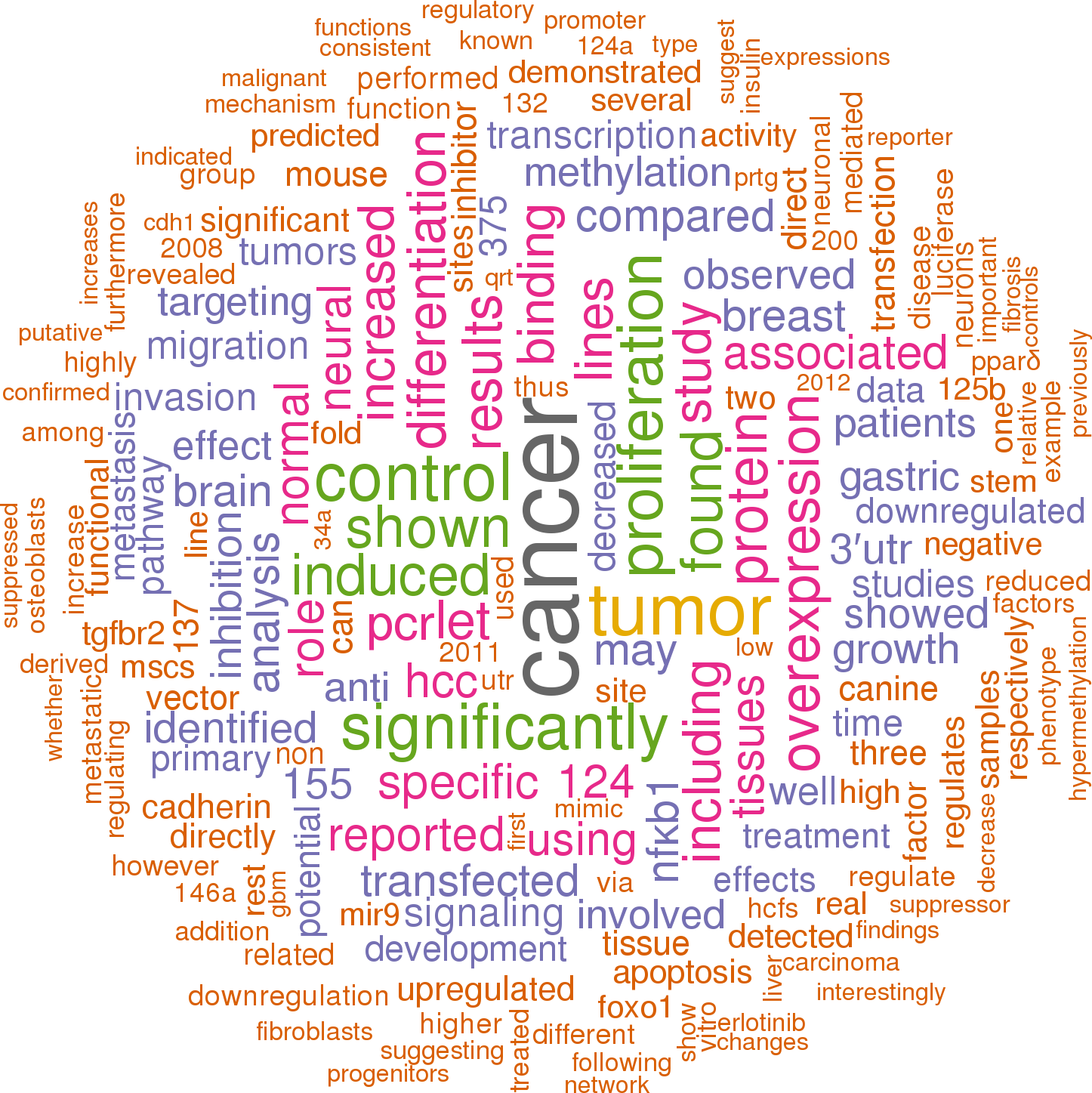Accession
MI0000466
Symbol
HGNC:
MIR9-1
Description
Homo sapiens
hsa-mir-9-1 precursor miRNA
Summary
Caution, this is an AI generated summary based on literature. This may have errors. ?
MIR9-1 is a microRNA implicated in various cellular processes, including apoptosis and cell proliferation [PMC9220270]. In the context of lung cancer, MIR9-1 has been identified as having a proapoptotic effect, which suggests that it can promote programmed cell death in cancerous cells [PMC9220270]. Additionally, MIR9-1 is involved in the suppression of cell proliferation, and this function is mediated through its interaction with the UHRF1 protein [PMC9220270]. UHRF1 has been known to play a role in gene expression regulation by interacting with epigenetic marks. The hypermethylation of MIR9-1 gene has been associated with an increased relative risk of death in lung cancer patients [PMC8835734]. This epigenetic alteration can lead to the downregulation of MIR9-1 expression, which may contribute to cancer progression by reducing its proapoptotic and antiproliferative effects. The study highlights the significance of MIR9-1 as a potential biomarker for lung cancer prognosis and as a target for therapeutic interventions [PMC8835734].
Literature search

547 open access papers mention hsa-mir-9-1
(3386 sentences)
(3386 sentences)
Sequence
663527
reads,
1291
reads per million, 111 experiments
cgggguugguuguuaUCUUUGGUUAUCUAGCUGUAUGAgugguguggagucuucAUAAAGCUAGAUAACCGAAAGUaaaaauaacccca
.(((((((....((((.(((((((((((((((.((((((.(.(....).).)))))).))))))))))))))).))))...))))))).
.(((((((....((((.(((((((((((((((.((((((.(.(....).).)))))).))))))))))))))).))))...))))))).
Structure
c guug C G u g g gggguug uuaU UUUGGUUAUCUAGCU UAUGAg g u u ||||||| |||| ||||||||||||||| |||||| | | ccccaau aaUG AAGCCAAUAGAUCGA AUAcuu u a g a -aaa A A c g g
Annotation confidence
High
Do you think this miRNA is real?
Genome context
chr1: 156420341-156420429 [-]
Disease association
hsa-mir-9-1 is associated with one or more human diseases in the Human microRNA Disease Database
| Disease | Description | Category | PubMed ID |
|---|
Mature hsa-miR-9-5p
| Accession | MIMAT0000441 |
| Description | Homo sapiens hsa-miR-9-5p mature miRNA |
| Sequence | 16 - UCUUUGGUUAUCUAGCUGUAUGA - 38 |
| Evidence |
experimental
cloned [2] |
| Database links |



|
| Predicted targets |



|
Mature hsa-miR-9-3p
| Accession | MIMAT0000442 |
| Description | Homo sapiens hsa-miR-9-3p mature miRNA |
| Sequence | 55 - AUAAAGCUAGAUAACCGAAAGU - 76 |
| Evidence |
experimental
cloned [2] |
| Database links |



|
| Predicted targets |



|
References
|



